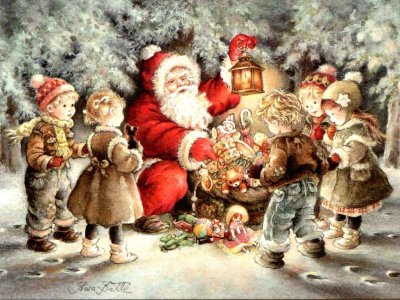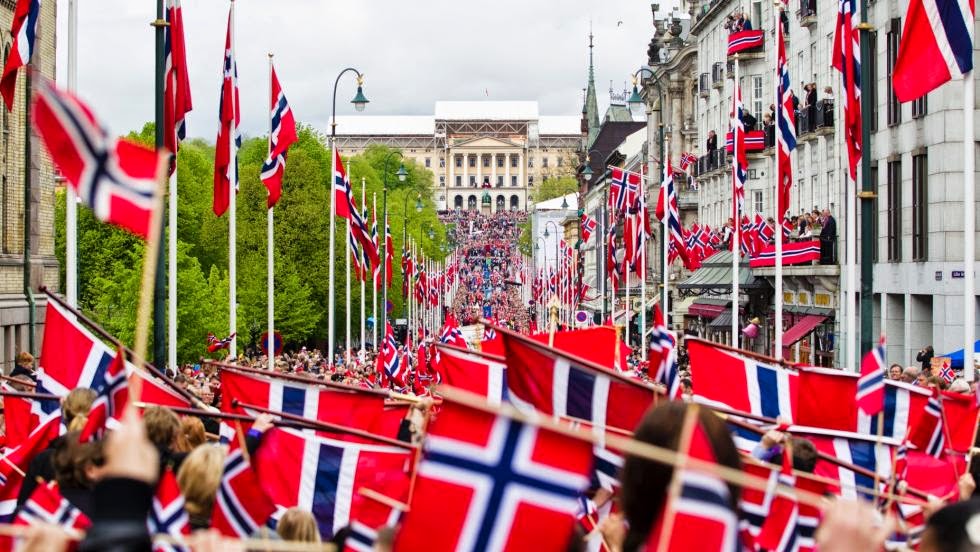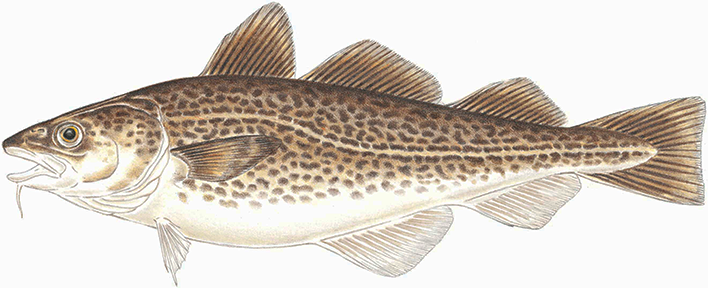by Astrid
Copyright © 2020
Culture (by Astrid)
Norway has a rich culture, and we are famous for, for example, trolls, myths and fairytales. Norwegians has for ages been telling each other stories about trolls and brave people fighting those trolls, etc. At first, people just told people and those told more people and that’s how the stories were kept alive.
That was until two men, called, Asbjørnsen and Moe collected all the fairy tales and wrote them down. Asbjørnsen started collecting stories in 1830 and 7 years later Jørgen Moe joined him, and they started selling their works to the world in 1841. Their collection of stories is a book which is still sold in bookshops to this day.
In Asbjørnsen and Moe’s works, there were mostly stories about evil trolls who met the main character and ends up with the main characters beating or killing the troll.
An example of this is the stories about “Askeladden”, a boy who is constantly mocked by his older brothers; Per and Pål. Per and Pål goes to help their father in the forest, get to marry the princess or win some kind of contest. They both fail, usually because the task is too hard, or they meet a troll that threatens them. Lastly, Askeladden gets the chance to try and wins over the troll because of some smart plan he came up with.
https://nn.wikipedia.org/wiki/Asbjørnsen_og_Moe, edited 20/11/19, read 30/1/20 writer: Several


Traditions (by Astrid)
Another part of Norwegian culture is our traditions, for example our Christmas traditions. We usually eat rice porridge when it is Christmas, or in December. When we eat rice porridge on Christmas, we hide an almond in the pot of porridge and the one person who gets the porridge bowl with the almond wins a price. We also celebrate Christmas on the 24th of December, and not everyone makes a that big deal out of the 25th, like other counties might do. On Christmas Eve we will probably have dinner with our family or friends. Typical Christmas foods can be ribs, “Pinnekjøtt” (another way to serve meat) or other kinds of meat, potatoes, roasted apples and prunes.
(Own expiriences)


We also make a celebration of our national day, the 17th of May. There, we also have traditions, new and older ones. One old 17th of May tradition is to sing the national anthem, called “Ja, vi elsker”, which, directly translated, means “Yes, we love”.
Another, kind of old, tradition on our national day is the parade. A lot of children, schools and school bands get together down in town to join the huge parade. Children (and grownups for that matter, who am I to judge) also look forward to this day, because on 17th of May we eat as many hot dogs and as much ice cream as we possibly can! That is really fun, actually, we enjoy 17th of May, haha.
(Own expiriences)

![]()


Sooo, I made a video about “Freia”, the chocolate factory, the video is attached.
-Astrid
Tourist attraction: (By Anelka)
Vigelandsparken
Vigelandsparken is a sculpture park, which is in a place called Frognerparken. There are over 200 sculptures in this park. All of them was made by a man called Gustav Vigeland. In all the sculptures there are 600 figures in total. Famous sculptures from the park is: Sinnataggen, monolitten, livshjulet and more.
Gustav Vigeland did not just make the sculptures, but he also designed the whole park, from how it’s going look like to where the sculptures are placed.
This park is the most visited attraction in Oslo, over 1 million visitors every year. The sculptures were made of granite, bronze and wrought iron. This park was the first park in Norway in 2009.


The Opera House (By Anelka)
The Opera House is a crafted cultural building and an architecturally and artistically success. The building was finished on the winter of 2007-2008. The building was opened on the 12th of April 2008. You can visit the Opera House on the inside and on the outside. It is the first opera house in the world to ever allow tourist and people to walk on the roof. It became Norway’s big tourist attraction.
The design of this beautiful crafted building was inspired by Norwegian glaciers. The sharp, white surface draws your imagination to an iceberg, which is drifting silently in the ocean, with the morning sun shining through the crystal blue windows as it would with frosty water.
The roof is easy to climb, making it the perfect destination for a Sunday walk. People can also admire the many works of arts to complete the Opera House, like the sculpture made by Monica Bonvicini which is called “She Lies”, it is a stainless steel and glass sculpture in the middle of the sea.
The building’s design has earned several awards and is today protected by the Norwegian Directorate for Culture Heritage. The building was meant to be easy accessed by the public as a gift to the people, that is why the entrance bridge is open 24/7.

The Royal Palace (By Anelka)
The Royal Palace is a palace in Oslo, it lies by the end of Karl Johan’s gate. The Palace is one of the worlds important building and an important symbol for Norwegian history after 1814. The Royal Palace is owned by the state and it is where the King and Queen live.
The Royal Palace was built as a residence King Carl Johan. The building process started in 1824, the foundation stone was laid by King Carl Johan on 1st of October 1825. The Palace was officially used on 26th of July 1849, by King Oscar 1st. King Carl Johan was supposed to be the first to use the Palace, but he didn’t make it, the Palace was completed after his death.
The Royal Palace has a park and it is called The Royal Palace Park. The Park surrounds the Palace on all sides, and some grassy areas, majestic trees, small ponds and statues. There are guards outside of the Palace and they change every day at 1:30 pm. Tourist especially in the summer, they have guided tours every day.


Ski and sports (By Anelka)
Norwegians have been skiing for 4000 years. Norway is the home of skiing; it is the undisputed national sport and national obsession of Norway. Skiing or, cross-country is that one thing that stokes the pride of Norwegians more than anything. Ski is a long and narrow gliding trampling with a bent tip for use on snow, usually there are one ski on each leg. Ski is original made by tree but developed to plastic.
Holmenkollen is a state-of-art arena for cross-country skiing, biathlon and ski jumping. The ski jumps and arena were completely rebuilt for the 2011 FIS Nordic World Ski Championships, and hosts World Cup events in ski jumping, cross-country skiing, biathlon and Nordic combined which is a combination of cross-country skiing and ski jumping. Holmenkollen is one of Norway’s most visited tourist attractions and includes a ski museum, jump tower, souvenir shop, ski simulator and café. The viewing platform at the top of the tower is open to the public and offers a panoramic view of Oslo and the surrounding forests.




Famous people in Norway: (By Anelka)
Kygo
Kygo is a famous DJ and producer in Norway and around the world. He was born in September 11th 1991 in Singapore, but he is from Bergen, Norway. He started taking piano lessons at age six and began producing electronic music after discovering Avicii as a teenager. He first gained fame for his remix of Seinabo Sey’s “Younger,” which earned more than 80 million views on YouTube and SoundCloud. He has since released original songs such as “Firestone” and “Stole the Show,” collaborated with artists like Coldplay, Ellie Goulding and Diplo, and played sold out shows around the world.

Edvard Munch (by Anelka)
Edvard Munch was born December 12th, 1863. He was born in a rustic farmhouse in the village of Ådalsbruk in Løten, Norway. He was a Norwegian painter, print-maker and he was an expressionist. Edvard Munch and has painted some famous paintings, such as “The Scream”, “Madonna”, “Puberty” and many more. Edvard Munch unfortunately died January 23rd 1944 in Oslo because he was ill, but there are still many people who loves and admire his art.

Our capital, where we live, won the EU Urban Green City Award in 2019
Here are a few things Norway has done/joined when it comes to the enviroment:
Recycling in general
Norway is part of Friends of fossils fuel subsidy reform. Subsidy Reform is for cleaning up the air, etc.
Recycling bottles
Fun fact:
Norway are the best in the world at recycling bottles.
(By Astrid)
https://www.miljohovedstaden.no/om-miljohovedstaden, Writer: unknown, Written: Unknown, Read: 23/1/20
https://www.klimaoslo.no/2018/10/09/miljohovedstaden-samarbeid/
Writer: Lise Helset, Written: 9/10/18, read: 23/1/20

.png)
Geography and nature – p. 1 (by Amélie)
Geography:
LOCATION:
First and foremost, Norway is an elongated country. With Sweden and Danmark, Norway is part of Scandinavia. Norway is one of the countries that are in the north of the globe. Despite its north location, Norway is famous for its mild climate. Nevertheless, it could get very cold in the north of
Norway, under –20 degrees.

COASTLINE:
Our coastline composes about 100 915 kilometres. That is the second largest coastline in the world, after Canada, for one single country. Our coastline is composed of several islands, fjords and bays. Norway is especially famous for its long fjords. Near the coast the climate is not very diverse. The temperatures are very regular and are not changing a lot. The winters are not cold, but the summers are not cold either. In contrast to the coast, the mainland has very diverse temperatures. In the mainland during summer, the temperatures can be very high, but in the winter, it can be ice cold outside.

MAINLAND:
Our mainland consists of the the eastland (in the east), the westland (in the west), the southland (in the south), “Trøndelag” (that is in the middle of Norway) and North-Norway (in the north).

LIST OF SOURCES:
https://snl.no/Norge (read 23/1-20)
Written 27th of January 2020
Written by Nils Petter Thuesen, Geir Thorsnæs, Sissel Røvik
Geography and nature – p. 2 (by Amélie)
Nature:
MOUNTAINS:
Norway’s massive mountains impress a lot. Norway’s highest mountain reaches 2469 metres above sea level and is named “Galdhøpiggen”.
Galdhøpiggen in Jotunheimen:

FJORDS:
Norway is especially famous for its large fjords. This is Norway at its most beautiful (Geirangerfjorden) – The Geiranger Fjord:

ROCK FORMATIONS:
Tourists from all over the world come to visit and hike to the famous Preikestolen, which is a pulpit rock, in Stavanger (a commune in the south of Norway):

This rock formation (Trolltunga) resembles in a big tongue-shape and is one of the most popular landmarks in Norway.

CLIMATE:
In Norway, we have a tempered climate (climate with four seasons and diverse climate and temperatures). Our climate is mostly dominated by the Gulf Stream that makes our climate milder as compared to our north location. Thanks to the West-Wind, warm ocean currents from the Gulf Stream reaches up to Norway because of our location that makes a perfect angle that indicates perfectly on the Gulf Stream.
The winters are very cold, and the summers can be up to 30 degrees sometimes.

LIST OF SOURCES:
https://rove.me/to/norway?gclid=EAIaIQobChMIyNqCluWZ5wIVTqWaCh3nTQUDEAAYASAAEgKENvD_BwE#Jun15-Aug25 (read 23/1-20)
Written (unknown time)
Written by (unknown author)
WaCh0BNwTYEAAYASAAEgLagPD_BwE (read 23/1-20)
Written (unknown time)
Written by (unknown author)
History – p. 1 (by Amélie)
Norway’s constitution:
Norway’s constitution 17th of May 1814 (our national day) – in Eidsvoll – Norway got a new law.
Most of the people who made the law wanted Norway to be independent from any other country. Earlier in the Norwegian history, Norway had not been an independent country – during about 200 years, Norway was not called Norway, but Danmark-Norway. We had no laws or rules and Danmark’s king decided everything. He had all the power. Until one day, when 112 Norwegian men decided to make a constitution for our independence. This would be a modern constitution where they emphasized the fact that we wanted Norway to be a free country, independent from any other country and a monarchy.

LIST OF SOURCES:
https://www.stortinget.no/no/Stortinget-og-demokratiet/Grunnloven/Eidsvoll-og-grunnloven-1814/ (read 23/1-20)
Written 9th of May 2018
Written by Stortinget
Oil and fish – p. 1 (by Amélie)
Oil:
A big part of our modern history is our oil history. Norway got very rich thanks to the oil we found in Nordsjøen in 1969. Since then, Norway became a very rich country. Today oil and gas are very important sources of energy and are the reason for why we have our high economy. Today Norway is one of the richest countries in the world thanks to our oil. Nevertheless, oil and gas are non-renewable energy sources, and that is a disadvantage to our future when it comes to our economic system that may not be as successful as it is now.

Fish:
Norway is famous and very proud of its good-quality fish. In the middle and north of Norway, we can find the fish with the best quality. The fishes live in cold water and are free, until we fish them of course.There are several types of fish, such as cod, salmon, halibut, coalfish and haddock.




LIST OF SOURCES:
https://www.visitnorway.com/places-to-go/trondelag/things-to-do/the-great-outdoors/fishing/fish-species-on-the-coast-of-trondelag/ (read 23/1-20)
Written (unknown time)
Written by (unknown author)
Published: Jan 30, 2020
Latest Revision: Jan 30, 2020
Ourboox Unique Identifier: OB-723694
Copyright © 2020










